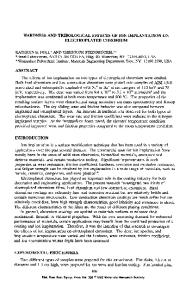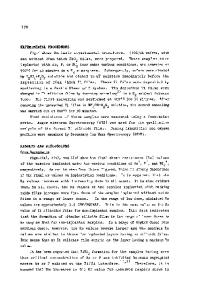Effects of Cesium, Iodine and Strontium Ion Implantation on the Microstructure of Cubic Zirconia
- PDF / 2,470,562 Bytes
- 8 Pages / 612 x 792 pts (letter) Page_size
- 98 Downloads / 328 Views
Effects of Cesium, Iodine and Strontium Ion Implantation on the Microstructure of Cubic Zirconia L.M. Wang, S. Zhu, S.X. Wang and R.C. Ewing Department of Nuclear Engineering and Radiological Sciences, University of Michigan, Ann Arbor, MI 48109-2104, USA, Email: [email protected] ABSTRACT Cesium, iodine and strontium ions have been implanted into yttria-stabilized cubic zirconia (YSZ) to determine the effects of fission product incorporation in YSZ that is considered as an inert nuclear fuel matrix. The ion implantation was conducted at room temperature to 1x1021 ions/m2 for each ion with ion energies ranging from 70 to 400 keV. The peak displacement damage level and the peak ion concentration in YSZ reached 205-330 dpa and 11-26 at%, respectively. The microstructure of the implanted YSZ was studied by in situ and cross-sectional transmission electron microscopy. In the iodine and strontium implanted samples, a damaged layer with a high density of defect clusters was observed, while in the cesium implanted specimen, the damaged layer is amorphous. Nanocrystalline precipitates were observed in the strontium implanted specimen after annealing at 1000°C. The results are discussed in terms of the ionic size, mobility and the solubility of the implanted species in YSZ. INTRODUCTION The disposition and disposal of plutonium from the dismantling of nuclear weapons and from the reprocessing of commercial nuclear fuel have lead to increased interest in the possibility of “burning” actinides in non-fertile or so-called inert-matrix fuels (e.g., fuels without 238U)[1,2]. This strategy prevents the further production of plutonium by neutron capture reactions and subsequent beta-decay. The recently adopted strategy in selecting materials for inert matrix fuel has been to consider, not only the properties of the material as a fuel, but also the waste form properties of the inert-matrix fuel. Such an approach would allow direct disposal without reprocessing after once-through burn-up. Yttria stabilized cubic-zirconia is a candidate material for use as an inert fuel matrix for “burning” excess plutonium in light water nuclear reactors [1-3]. Zirconia is also considered to be an excellent nuclear waste form for direct geologic disposal [4-6]. Both applications are based on zirconia's high solubility for actinides, excellent chemical durability and exceptional stability under irradiation [1-7]. Because the accumulation of fission and other transmutation products in the zirconia during burn-up may significantly affect the radiation response and the chemical durability of the material, the solubility and mobility of the fission product nuclides in the inert matrix fuel at both high temperature (reactor fuel conditions) and low temperature (repository conditions) are important. Of special interest are the long-lived radionuclides 99Tc, 129I and 135Cs, as well as shortlived 90Sr that can make significant contributions to radiation exposure if released from a nuclear waste repository. There have been only limited studies on the behavior o
Data Loading...










